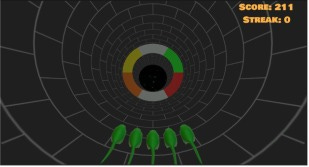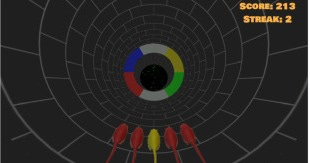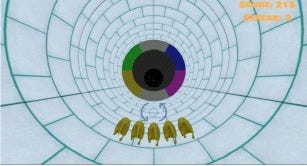Dialing back the video gaming push
More accurately, being sensitive to where and how it's pushed
LFG: Learning from Games is a series dedicated to making the complex world of video game research just a little easier to understand. I post one about 2-3 times a month in between my Science Shorts and Coming Soon series. LFG #32 is about being sensitive to non-gamers as gaming gets pushed into all corners of our lives.
Hello JOMT Reader!
We all get excited about certain things, especially when they align with our interests. For many of you, and myself, one of those things is gaming. It’s one of many things that have fueled the thoughtful and insightful conversations on Substack.
But not everyone enjoys gaming to the extent that we do. A recent report estimates that roughly 40% of the world’s population plays video games1. That means the majority of the population has no access to, is indifferent towards, or against video gaming. And in this post, I want to explore how forcing gaming into every corner of everyone’s life might disadvantage those who aren’t as enthusiastic about gaming as some of us are.
I’ve been thinking and talking about applying video games to everything from learning to diagnosing health conditions and even treating health conditions. But those perspectives were shared with my gamer hat on. What happens when video games get pushed onto those who haven’t been subjected to the horrors of the video gaming cobwebs in my head? That question fueled researchers in The Netherlands to study how video game-based tests for brain function might not work the same in gamers versus non-gamers.
😴Traditional ways to measure brain function are boring
The study that we’ll explore starts off with a problem statement that is so strongly worded and rarely seen in academic writing so it is worth a direct quote:
...cognitive tasks use repetitive and behaviorally restrictive designs that bore, disengage, and demotivate participants.
This is about as pointy as academic writing can get (the bolded emphasis is my own). But it does highlight the limitations of the standard set of tests that are used to measure brain function. It’s not that they are bad or inaccurate — but the worry is that the brain function measurements can be affected negatively if the users start to lose interest in the test. You can try some of those traditional brain function tests below:
The Stroop Test: This test measures reaction times when there are conflicting pieces of information that have to be processed.
Try it for yourself here: https://www.labvanced.com/page/library/2866The Flanker Task: This test measures how well you can respond to instructions while facing distractions.
Try it for yourself here: https://www.labvanced.com/page/library/27061Wisconsin Cart Sorting Test: This test measures how quickly you can adapt to rules that change.
Try it for yourself here: https://www.labvanced.com/page/library/61771
I tried some of the tests linked here and to be honest, they weren’t as boring, disengaging, or demotivating as I thought they would be. But that’s probably because I live and love this kind of stuff. I can see how it might get boring for non-gamer participants, especially if you have to do it multiple times.
🎮The video game to rule them all
To get around boredom, disengagement, and demotivation of traditional brain function tests, a video game called Tunnel Runner was developed2. In essence, it is an infinite runner game, where you guide a character through an endless obstacle course. The twist with Tunnel Runner is that elements of some traditional brain function tests are built into the game.

In the baseline trial mode of Tunnel Runner, the player has to navigate the coloured mice to the matching coloured section of the ring.

In the flanker trial mode, the central mouse is coloured differently from the flanking mice. The goal is to navigate to the portion of the ring that matches the colour of the central mouse.

In the ice trial mode, the controls are reversed whenever a new obstacle appears.

Finally, in the lava trial mode, the players have to stay off the lava on a safe patch, which changes position when a new obstacle appears.
If the flanker and ice trial modes sound familiar, it’s probably because they are modeled after the Stroop and Flanker traditional tests. But these traditional tests have been turned into a game that most gamers are familiar with.
🚫But what if you aren’t a gamer?
This is the big question that the researchers of this study wanted to answer. Would gamers and non-gamers experience this brain-function-test-turned game differently? Would the results be reliable for either group?
The researchers first compared the experience of gamers and non-gamers across four major aspects of playing games: motivation, focus on the game, player control of the game, and what the game asks players to do (demands).
Motivation: Gamers were more motivated to play the game compared to non-gamers.
Focus: Gamers and non-gamers were equally focused on the game.
Control: Gamers felt they had greater control over the game than non-gamers.
Demands: Gamers found the game less frustrating and difficult compared to non-gamers.
This might not be surprising as gamers are more familiar with different aspects of video games compared to non-gamers. Said differently, it’s not surprising that non-gamers didn’t enjoy playing Tunnel Runner, a video game that also happens to measure brain function.
The real test is whether the brain function measurements using Tunnel Runner are reliable for both gamers and non-gamers. One way to answer this question is to look at the jitteriness of measurements or how much they vary as participants do the same test over and over again.
For the baseline and flanker trial modes, there was no difference in the jitteriness of data between gamers and non-gamers. But for the more complicated ice and lava trial modes, the data was more jittery for non-gamers than for gamers. The less precise nature of non-gamer data from Tunnel Runner suggests that gaming may not be the best way to get accurate measures of brain function in non-gamers.
❓So what?
My world view that everything should be turned into a video game probably needs to be revised. Given how accessible video games can be, I didn’t think that a person’s attitude towards the act of video gaming in general could affect the reliability and accuracy of the results from a video game.
There are many possible reasons for why non-gamers had a worse experience playing Tunnel Runner compared to gamers. It could be related to a non-gamer’s sense of mastery of video games (or lack thereof); or the non-intuitiveness of how keyboard or joystick controls affect things on screen (gamers instinctively know or have an idea of how controls affect characters on screen). In any case, a negative outlook on video gaming could affect the results of any video game-based test.
A test should provide unbiased results that can be compared against each other. But things get complicated when the test-taker brings their own perspectives and biases that could affect test results. What’s true for one set of test-takers might not be true for another. That means for video game-based tests, we probably need a different set of standards and averages depending on whether you are a gamer or non-gamer.
Looking beyond these brain function tests, using video game-based tests in the hospital, at work, or at school should also be done with caution to make sure that the results are accurate for gamers and non-gamers alike. A different set of standards or a completely separate test may be needed if test results are drastically different between gamers and non-gamers.
That being said, I won’t stop hoping for a future full of video gaming, but maybe I can be a little less pushy about forcing gaming onto non-gamers (JOMT will remain pushy because that’s what the publication is all about 😂).
If you want to read the article that inspired this post, you can read it here for free: https://www.sciencedirect.com/science/article/pii/S0747563225001670
If you liked what you read, please consider giving this post a like and sharing it with your community!
https://newzoo.com/resources/trend-reports/newzoos-global-games-market-report-2024-free-version
You’ll need to provide your email to be able to download the report, but I promise it isn’t a bogus link.
https://dl.acm.org/doi/10.1145/3613904.3642418
This is the original scientific article that reported on the development and testing of Tunnel Runner. Sadly, there are no demo links that I can find.




